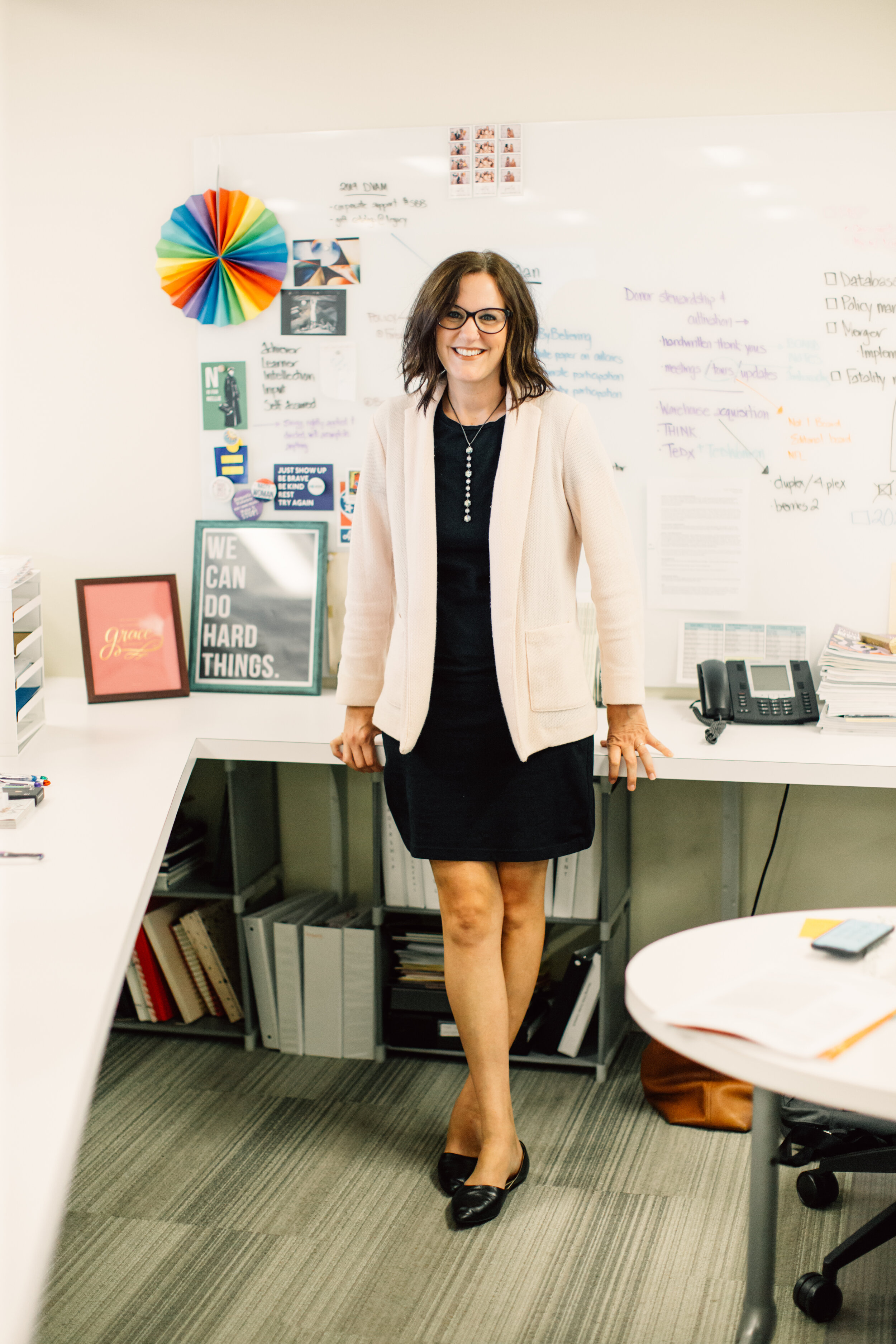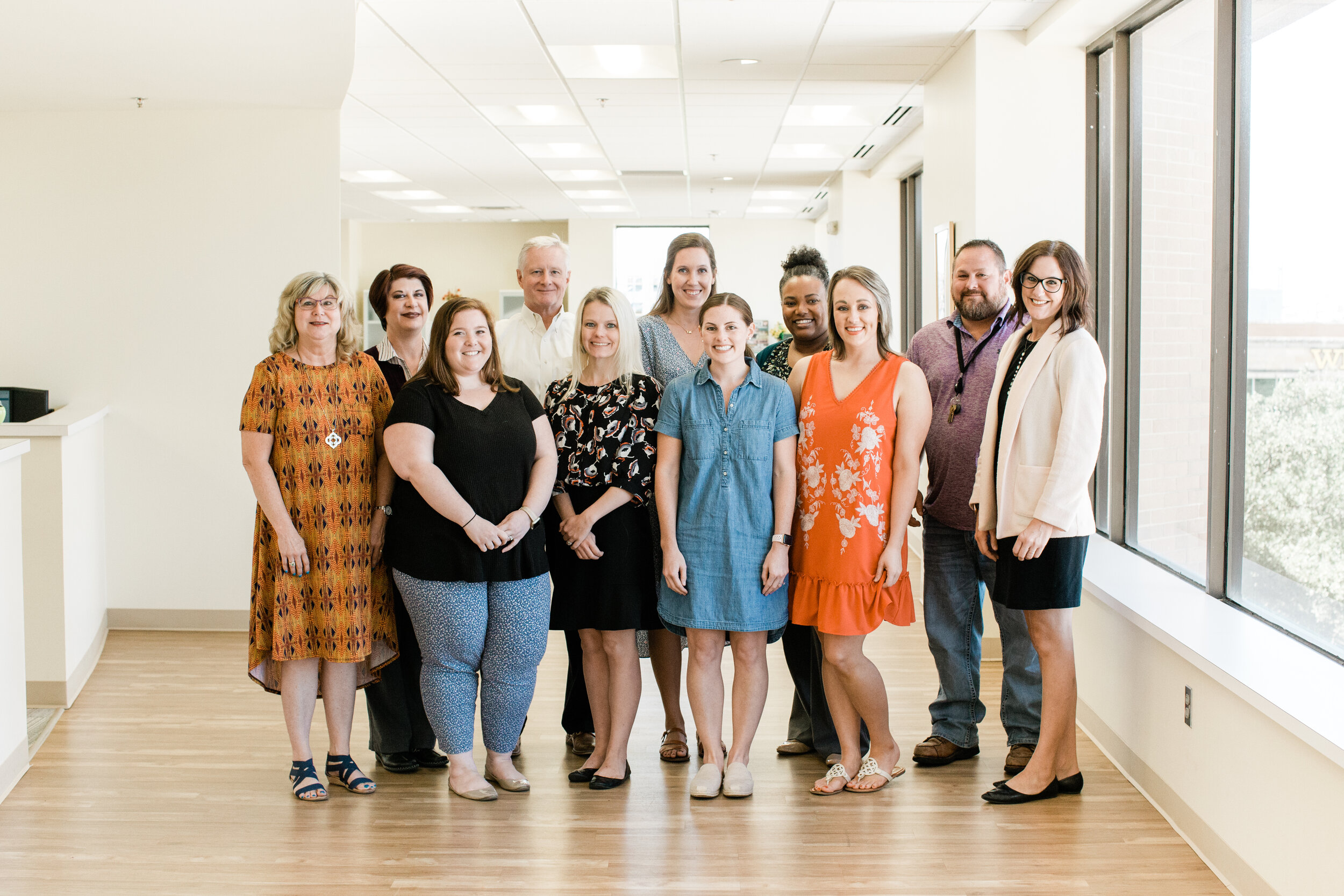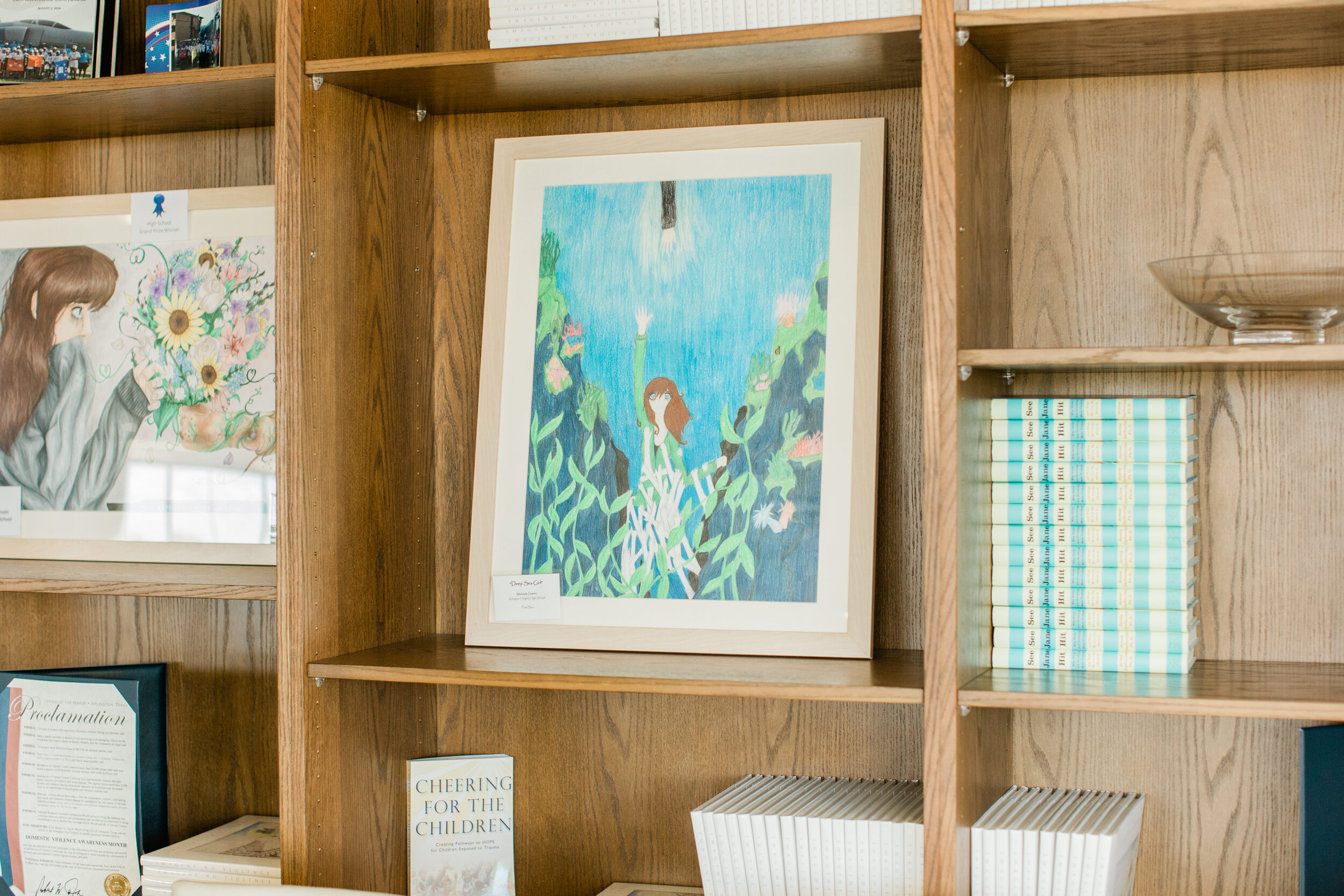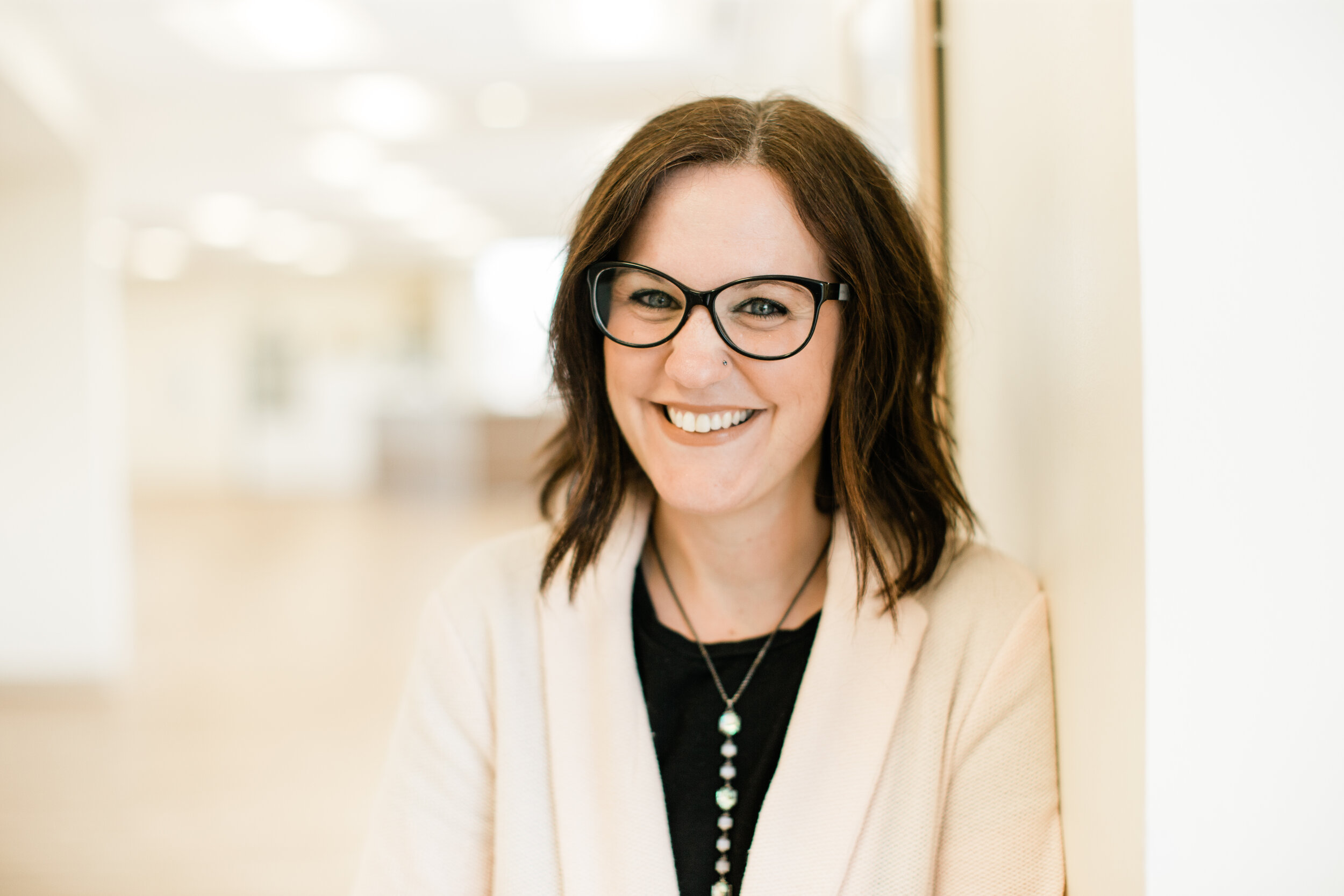Interview by Mary Martin. Photos by Josie Gammet.
Today we are sharing a conversation with the CEO of SafeHaven, Kathryn Jacob. During October’s Domestic Violence Awareness Month, the SafeHaven team is spearheading a campaign throughout North Texas in hopes to ignite a fire for change. Kathryn shares from her experience as a social worker, international Peace Corps volunteer, and previous Executive Director of the Housing Crisis Center of Dallas, highlighting the startling statistic that 1 in 3 women in Tarrant County will experience intimate partner violence in their lifetime.
Would you share about your journey into the nonprofit world? What led you to a career serving people?
When I was in high school, I spent some meaningful time in central Appalachia – certainly not the first time I saw systemic poverty, but this was very different than my Chicago roots. That time lit a fire in me, exposed me to the ‘real world’, the importance of history on a culture, and the systems of oppression and power that can stifle families and even entire populations.

Was there an atmosphere of giving back in your family as you were growing up?
Both of my parents were in ‘helping professions’, so certainly that had an influence on me. But more important, perhaps, was the impact of faith on my development as a child and, more, a teenager.
What was your first experience working alongside women who have experienced domestic violence?
As with most of my lightbulb moments, a family I worked with in Appalachia in 1994 exposed me to intimate partner violence for the first time. The patriarch of the family was a truck driver, and often gone from the home for weeks at a time. When he would return for short stints, the entire nature of the home environment would change – became dark, scary, unstable. I only met him once, but being with this family during the times he was not present painted enough of a picture of him that I knew exactly who he was.
As a social worker, what were some of the biggest roadblocks you experienced providing safety and dignity to the women you serve at SafeHaven?
There are so many roadblocks, but thematically the problem with the system lies in the fact that the onus falls to the survivor. She has to leave her home and go to shelter. She has to break free. She has to testify to the most intimate details of her relationship in front of twelve strangers on a jury. When it’s a difficult decision to leave anyway, these added systemic issues only exacerbate the reasons to stay.

Outside of emergency shelter, how is the team at SafeHaven addressing domestic violence in North Texas?
Oh, so many ways!! I think SafeHaven (and most organizations addressing domestic violence) is most known for shelter, but shelter is not the intervention that works for everyone. It’s not what every survivor needs. We work best with survivors when we start by believing them, and then we allow them to lead us through their journey. Our work is certainly client-centered at its heart.
SafeHaven is Tarrant County’s only state-designated family violence center. This means a lot of different things, but one of the most significant is that SafeHaven is best positioned to serve as the lead for our county’s only High Risk Team. This team (HRT) brings together all the systems that interface with survivors and offenders on their relationship journey and works to address gaps in service or hiccups along the way. The HRT identifies both high risk victims, offenders, and also systemic problems the team needs to address with the end goal of ending domestic violence homicides in Tarrant County.

Would you mind sharing a story about a woman who has experienced freedom from domestic violence and is now involved in your cause?
We have so many survivors who are now staunch SafeHaven advocates – including several who now sit on SafeHaven’s Board of Directors. All of our work revolves around the survivor needs and her experience. Survivors know their relationships best, they know their offender best. It’s our responsibility to trust her and listen to her needs. These strong women are almost always the biggest advocates for others and for SafeHaven – the best cheerleaders we could ever ask for.
How have you seen agencies and organizations collaborating to make a difference?
It’s interesting because often folks try to put all the nonprofits together – but I think our most effective collaborations are with groups from government and for-profit organizations. One in three women in Tarrant County will experience domestic violence in her lifetime. That’s more people than SafeHaven could ever serve, so if we want to be effective, we have to connect with others who work in this space to produce the best outcomes for our neighbors.

What are some ways that people can get involved at SafeHaven?
So many ways! We have a wide variety – a menu, even – of opportunities to connect, advocate, cheerlead, and serve. Check out our website: www.safehaventc.org. There are a million ways, big and small, to invest in the solutions to intimate partner violence in our county.
SafeHaven has also partnered with local artists to create three original t-shirt designs to support SafeHaven’s work in the community. You can purchase a t-shirt and 100% of the proceeds benefit SafeHaven.
If you know someone who is Doing Good in Dallas, we’d love to hear about it! Share their story with us.